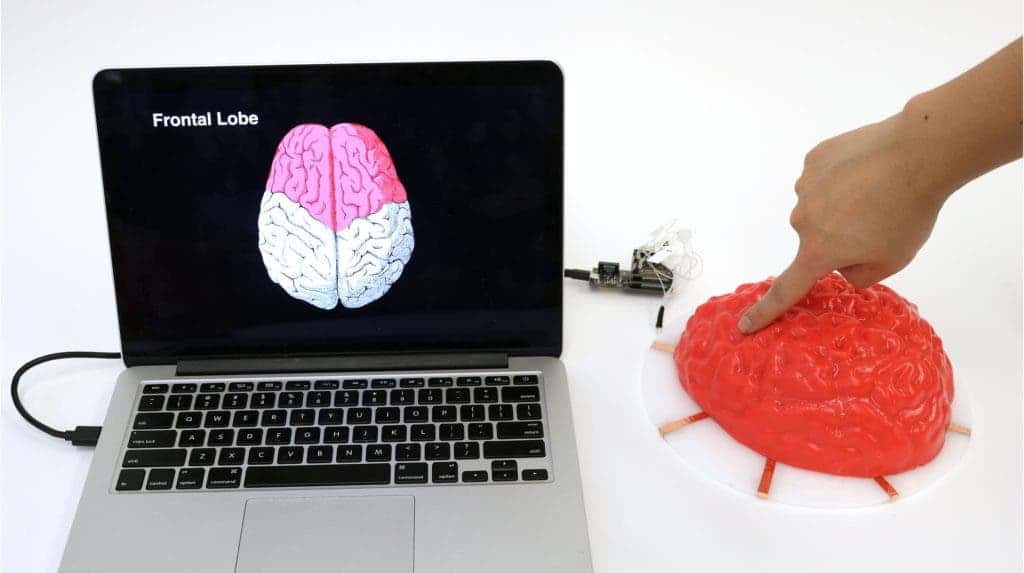Carnegie Mellon University researchers have managed to fit the ever-so-convenient touchpad in a spray can. Using this technology, any surface, regardless of size or shape, can be turned into a working touchpad.

Image credits CMU.
We’re used to seeing touch sensitivity employed on flat, often small surfaces, such as tablets or smartphones. This mostly comes down to the cost associated with building the devices, and the need to install them on mechanically-resilient frames. But imagine you could take any finished object and then cheaply coat it in a touch-sensitive layer as easily as spraying some paint on it.
You can with this can
That’s what researchers at CMU have been working on. Dubbed Electrick, their spray can turn everything from walls to Jell-O into touch-sensitive sensors. The coating functions much like other touchscreens, through the shunting technology — when you touch the screen, the layers connect and a small charge is shunted to the electrodes. Several electrodes on the edge of the sensor/coating pick up these signals. By first applying electrically conductive paint-like layers onto objects and then connecting a series of electrodes to them, the researchers showed that they can pinpoint the exact point of touch on the surface using a technique called electric field tomography.
Electrick could solve some of the current limitations of touch-sensitive technology. For instance, large touch surfaces are expensive to produce, and flexible ones are still confined to research and development labs as of now. But the spray-on touch sensor can be applied “on almost anything” says Chris Harrison, assistant professor in the Human-Computer Interaction Institute (HCII), head of the Future Interfaces Group, and first author of the paper, taking on the shape as well as the flexibility of the base objects. The technology should be both accessible to hobbyists and compatible with common manufacturing methods, such as spray coating, vacuum forming, casting/molding, or 3D printing, the team reports.
The technology does have some limitations. In comparison to traditional touch devices, Electrick isn’t as accurate. But with a one-centimeter margin or error, it’s more than precise enough to comfortably allow the use of buttons, sliders, or other controls.
The team used the coating to cover objects including a 4-by-8 ft (1.2 x 2.4 meters) sheet of drywall, a steering wheel, a guitar, a Jello-O mold of the human brain, even some Play-Doh. They also used the coating to make an interactive smartphone case, which could, for example, open the camera app when held a certain way, and a game controller which could change the location of its buttons and sliders based on the game or user preference.
Overall, the team reports that the coating proved to be durable during their testing, but will not look into adding a protective coating atop the conductive layers to make the screens more wear-proof.
The findings will be presented at CHI 2017, the Conference on Human Factors in Computing Systems, in Denver later this week.


